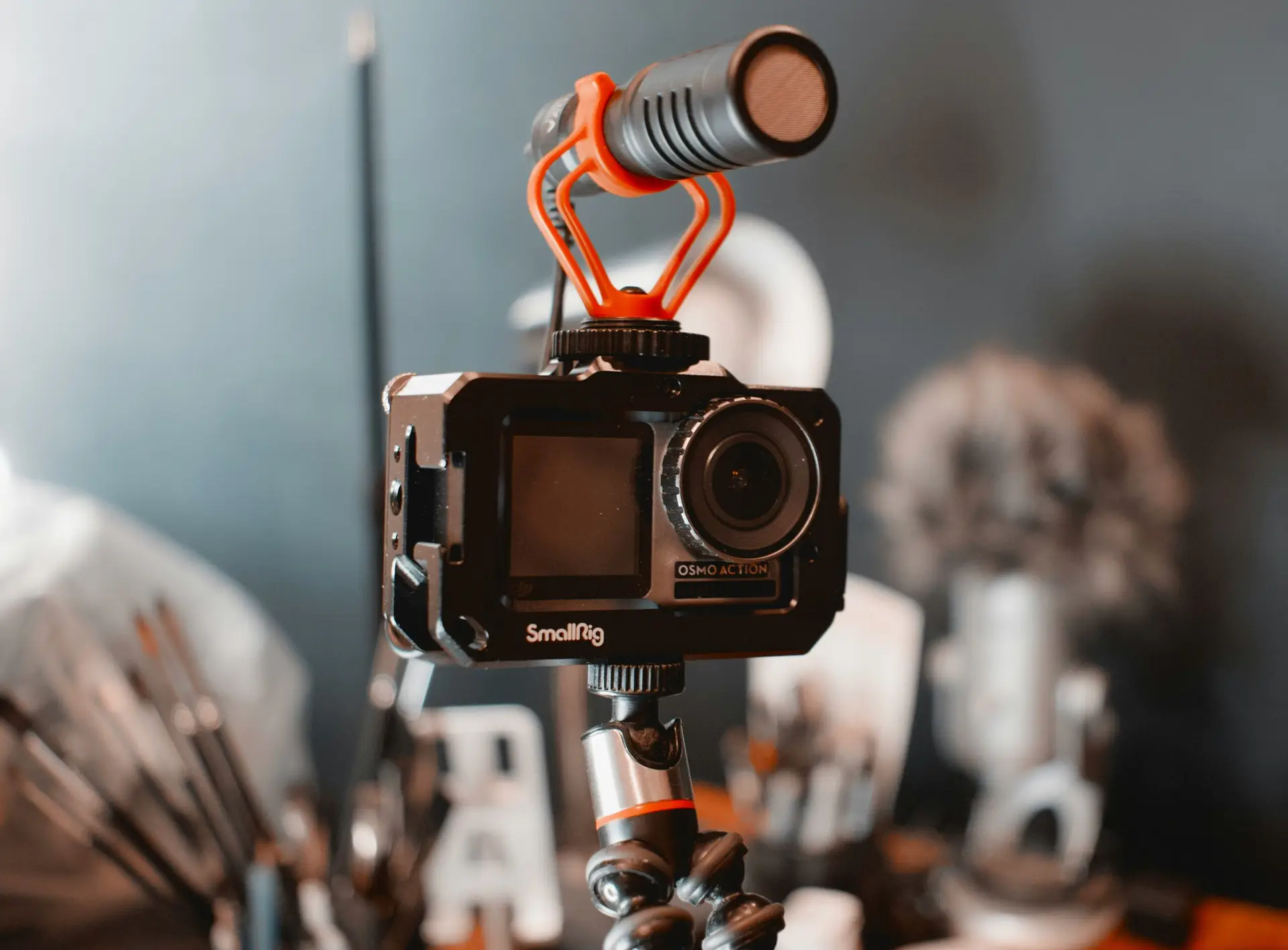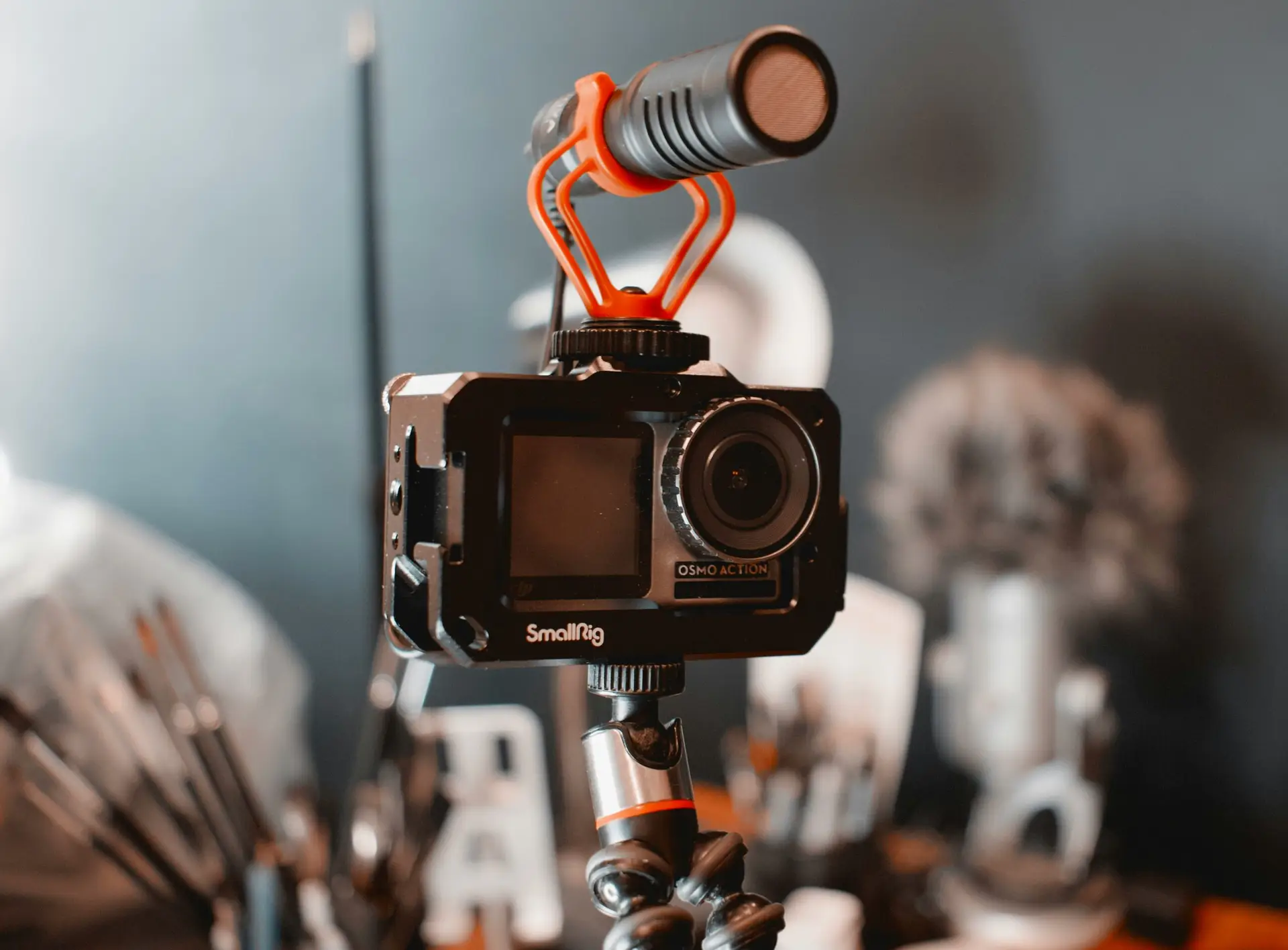Introduction to Sports Photography
Sports photography stands as a unique and exhilarating genre within the broader field of photography. It captures the raw energy, intense emotions, and high-paced action inherent in sports, offering a dynamic and often challenging endeavor for photographers. This specialization is not merely about taking pictures of athletes in motion; it is about freezing a moment in time and conveying the passion, drama, and spirit of the sport.
The importance of sports photography cannot be overstated. It serves to immortalize moments of triumph, heartbreak, and everything in between, creating visual stories that resonate with fans and athletes alike. Whether it’s the decisive goal in a soccer match, the sheer determination visible in a marathon runner’s face, or the graceful arc of a gymnast in mid-air, sports photography captures images that inspire and evoke powerful emotions.
Sports photography presents unique challenges that differentiate it from other photographic genres. The fast-paced nature of sporting events requires photographers to have quick reflexes, an understanding of the sport, and the ability to anticipate key moments. Lighting conditions can vary drastically, from the bright sunlight of an outdoor track meet to the artificial lighting of an indoor basketball game, each requiring different technical approaches. Furthermore, photographers must navigate crowded venues and often have limited mobility, making it essential to maximize the use of available angles and perspectives.
The key objectives in sports photography revolve around capturing the essence of the sport and the athletes’ performance. This involves a keen eye for detail, an understanding of composition, and proficiency in using the right equipment. The excitement and action that define sports are what make sports photography so compelling. Every shot taken has the potential to tell a story, and mastering this art form requires dedication, practice, and a passion for both photography and sports.
This introductory section sets the stage for delving into the various techniques that can elevate one’s sports photography skills, ensuring that each captured moment is as impactful and vivid as the event itself.
Understanding Your Equipment
In the realm of sports photography, mastery begins with a solid understanding of your equipment. The foundation of any successful sports photographer’s kit is a high-speed camera. Cameras with fast continuous shooting speeds, such as those capable of 10 frames per second or more, are crucial for capturing the dynamic and often unpredictable moments that characterize sporting events.
Equally important are the lenses you choose. Different sports demand different focal lengths and apertures. For instance, a telephoto lens (such as a 70-200mm f/2.8) is ideal for field sports like football or soccer, allowing you to capture action from a distance with a shallow depth of field. Conversely, a wide-angle lens (such as a 24-70mm f/2.8) may be more suitable for indoor sports or events where you can get closer to the action.
A sturdy tripod or monopod is another essential piece of gear, especially for longer events. These tools not only help stabilize your camera but also reduce fatigue during prolonged shooting sessions. A monopod, being more versatile and easier to maneuver, is often preferred in fast-paced environments where mobility is key.
Familiarity with your camera settings is paramount for achieving sharp, high-quality images. Shutter speed, aperture, and ISO are the trifecta of settings you must master. A fast shutter speed (1/1000s or faster) is necessary to freeze action, while a wide aperture (low f-number) helps in low light conditions and creates a pleasing bokeh effect. Adjusting ISO is a balancing act; higher ISO settings can improve exposure in darker environments but may introduce noise, affecting image quality.
In summary, understanding and optimizing your equipment is the first step towards mastering sports photography. By investing in the right gear and becoming proficient with camera settings, you lay the groundwork for capturing stunning, professional-quality images in any sporting arena.
Mastering Camera Settings for Action Shots
Capturing the dynamic essence of sports photography requires a deep understanding of camera settings to effectively freeze motion and highlight the intensity of the moment. One of the most critical settings to master is the shutter speed. A fast shutter speed, typically 1/1000th of a second or quicker, is essential for freezing fast-moving subjects, whether it’s a sprinter nearing the finish line or a soccer player striking the ball. This high-speed setting ensures that movement is captured crisply, without blurring, preserving the sharpness of the action.
Equally important is the aperture, which controls the depth of field. A wider aperture (lower f-number) allows more light to enter the camera, which is particularly useful in low-light conditions often encountered in indoor sports arenas or evening matches. However, a wider aperture also results in a shallower depth of field, which can beautifully isolate the subject from the background, making them stand out more prominently. Conversely, a smaller aperture (higher f-number) increases the depth of field, ensuring that more of the scene remains in focus. Balancing these settings can be crucial, especially in varying lighting situations.
ISO settings play a pivotal role in achieving optimal exposure. In well-lit environments, a lower ISO (around 100-400) is preferable to maintain image clarity and reduce noise. However, in less favorable lighting conditions, such as night games or poorly lit gyms, increasing the ISO (800-3200 or higher) can be necessary to ensure the image is properly exposed. The key is to find a balance where the image remains clear without excessive graininess.
In practical terms, mastering these camera settings involves continuous practice and experimentation. Sports photographers must be adept at quickly adjusting their settings based on the changing dynamics of the game and the lighting conditions. Utilizing techniques such as pre-focusing on a specific spot and using burst mode can also enhance the likelihood of capturing that perfect action shot. By skillfully balancing shutter speed, aperture, and ISO, photographers can elevate their sports photography, capturing the raw energy and excitement of the moment.
Anticipating and Capturing the Perfect Moment
Mastering sports photography necessitates a keen understanding of the sport you are capturing. This foundational knowledge enables photographers to anticipate the ebb and flow of the game, predict key moments, and position themselves strategically to capture the most compelling shots. Familiarizing yourself with the rules, common plays, and the athletes’ tendencies gives you a significant edge in identifying when and where the decisive moments will occur.
Positioning is crucial in sports photography. The best vantage points often vary depending on the sport, the venue, and the specific event. For instance, in soccer, situating yourself near the goal can provide excellent opportunities to capture the intensity of the game. Conversely, in basketball, being positioned closer to the court can help in snapping the high-flying action. Strategic placement allows for a clear line of sight and minimizes obstructions, ensuring that you are poised to capture the action as it unfolds.
Once positioned, readiness becomes paramount. Pre-focusing on a particular area where the action is anticipated to occur can save precious milliseconds, which can be the difference between capturing an iconic moment or missing it entirely. Utilize autofocus settings tailored to continuous movement, such as AI Servo or Continuous AF, to maintain sharp focus on moving subjects. This technique ensures that you are always prepared for the unexpected turns and rapid movements inherent in sports.
Another critical skill is mastering the art of following the action. This involves tracking the movement of the players and the ball with your camera, ensuring that you are always ready to capture the climax of a play. Practicing panning, where the camera is moved in sync with the subject’s movement, can help in achieving sharp images of moving subjects against a blurred background, emphasizing the dynamism of the moment.
In essence, the ability to anticipate and capture the perfect moment in sports photography combines a deep understanding of the sport, strategic positioning, and technical readiness. These elements together ensure that photographers are always one step ahead, ready to immortalize the fleeting moments that define sporting excellence.
Composition and Framing in Sports Photography
When it comes to sports photography, mastering composition and framing is crucial for capturing dynamic and engaging images. One of the fundamental techniques is the rule of thirds, which involves dividing the frame into a 3×3 grid and placing the subject along these lines or at their intersections. This approach creates a balanced and visually appealing composition, drawing the viewer’s eye naturally to the most important elements of the shot. For example, a soccer player about to kick a ball positioned along the rule of thirds grid can make the image more compelling.
Another essential technique is the use of leading lines. These are lines within the frame that guide the viewer’s eye towards the main subject. In sports photography, leading lines can be anything from the lines on a basketball court to the trajectory of a tennis ball in motion. By incorporating leading lines, photographers can add depth and dimension to their images, making them more immersive and engaging.
Framing is equally important in sports photography. This involves using elements within the scene to create a “frame” around the subject. Natural frames can be found in the environment, such as goalposts, arches, or even the arms of other players. Effective framing can help to focus attention on the main action, eliminating distractions and enhancing the overall narrative of the photograph.
Utilizing the surrounding environment and other players can also significantly enhance the composition. For instance, capturing a runner with a cheering crowd in the background can add context and emotion to the image. Similarly, photographing a cyclist with a scenic backdrop can highlight the sport’s connection to nature. By being mindful of the surroundings and incorporating them into the composition, photographers can create more dynamic and storytelling images.
Effective composition and framing techniques are essential for elevating the quality of sports photography. By applying the rule of thirds, leading lines, and thoughtful framing, photographers can capture powerful and engaging images that tell a story and captivate the audience.
Post-Processing Tips for Sports Photos
Post-processing is a crucial phase in sports photography, transforming raw images into compelling visual narratives. The first step in refining your sports photos involves basic adjustments like cropping and exposure correction. Cropping allows you to remove distracting elements and focus on your main subject, creating a more powerful composition. Fine-tuning exposure ensures that your photo accurately represents the lighting conditions during the event, bringing out the essential details.
Color correction is another fundamental aspect of post-processing. Adjusting the white balance and enhancing colors can breathe life into your images, making them more vibrant and true to the scene. For sports photography, where action and emotion are captured in split seconds, accurate color representation is vital.
Once the basics are handled, advanced techniques can significantly elevate the quality of your sports photos. Noise reduction is particularly useful for images taken in low-light conditions, helping to smooth out graininess without losing detail. Sharpening is another critical step, enhancing the clarity and definition of your subject, making the actions and expressions more pronounced.
Selective editing allows you to highlight the main subject while subtly downplaying the less critical parts of the image. Techniques like dodging and burning can improve the overall balance by brightening or darkening specific areas, guiding the viewer’s eye to the focal point of the photograph.
Sports photographers often rely on specialized software to achieve these enhancements. Adobe Lightroom and Photoshop are among the most popular tools, offering a wide range of features for both basic and advanced editing. Other notable software includes Capture One, which provides excellent color grading options, and DxO PhotoLab, known for its powerful noise reduction capabilities.
By mastering these post-processing techniques, you can transform your sports photos from ordinary to extraordinary, capturing the dynamic essence of athletic events with precision and artistry.
Ethics and Etiquette in Sports Photography
Sports photography, while thrilling and rewarding, comes with a set of ethical considerations and etiquette guidelines that professionals must adhere to. Respecting athletes and spectators is paramount. Photographers should always be mindful of their presence and avoid obstructing the view or interfering with the experience of those attending the event. Capturing candid moments is essential, but it should never come at the expense of causing discomfort or invading the personal space of individuals.
Obtaining necessary permissions is another critical aspect. This includes securing the appropriate credentials to access restricted areas and ensuring consent when photographing minors or vulnerable individuals. Many sporting venues have specific rules and regulations that photographers must follow, such as designated shooting areas and restrictions on flash photography. Adhering to these guidelines not only ensures the smooth operation of the event but also reflects the professionalism and integrity of the photographer.
Maintaining integrity and professionalism while capturing and sharing sports images is vital. This involves accurate representation of the event, without manipulating or altering photos in a way that misleads the audience. Additionally, crediting athletes, teams, and other relevant parties when sharing images on social media or other platforms is a crucial part of ethical conduct. Photographers should also be cautious about the timing and context of sharing images, particularly if they depict injuries or other sensitive moments.
In essence, the role of a sports photographer extends beyond technical proficiency. It encompasses a deep respect for the sport, the athletes, and the audience. By adhering to ethical guidelines and etiquette, photographers can ensure they contribute positively to the sporting community, capturing moments that honor the spirit of competition and the dignity of all involved.
Building Your Sports Photography Portfolio
Creating a compelling sports photography portfolio is essential for showcasing your talent and attracting potential clients or employers. Start by selecting images that demonstrate a wide array of skills and cover various sports. Highlight your ability to capture action, emotion, and the unique atmosphere of different sporting events. This diversity will not only display your versatility but also appeal to a broader audience.
Storytelling is a crucial element in sports photography. Ensure your portfolio narrates engaging stories through your photos. Each image should convey the intensity, passion, and drama inherent in sports. Consider including sequences that illustrate a significant moment, such as the buildup to a winning goal or the determination on an athlete’s face. These narratives can make your portfolio more memorable and impactful.
When presenting your work, it’s essential to excel in both digital and print formats. For a digital portfolio, utilize a professional website or a dedicated portfolio platform. Ensure the website is user-friendly, visually appealing, and mobile-responsive. High-resolution images are a must to showcase the details and quality of your work. For a print portfolio, invest in high-quality prints and a sleek, professional presentation book. The tactile experience of a printed portfolio can leave a lasting impression during in-person meetings.
Networking plays a pivotal role in promoting your sports photography portfolio. Engage with the sports photography community by attending events, joining online forums, and participating in social media groups. Building relationships with other photographers, athletes, and industry professionals can lead to referrals and collaborations. Additionally, consider reaching out to local sports teams, magazines, and agencies to introduce them to your work.
Promoting your portfolio extends to maintaining an active online presence. Regularly update your website and social media profiles with your latest projects. Share behind-the-scenes content and insights into your creative process to engage your audience. Consistent self-promotion and networking efforts can significantly enhance your visibility and lead to new opportunities in the competitive field of sports photography.




